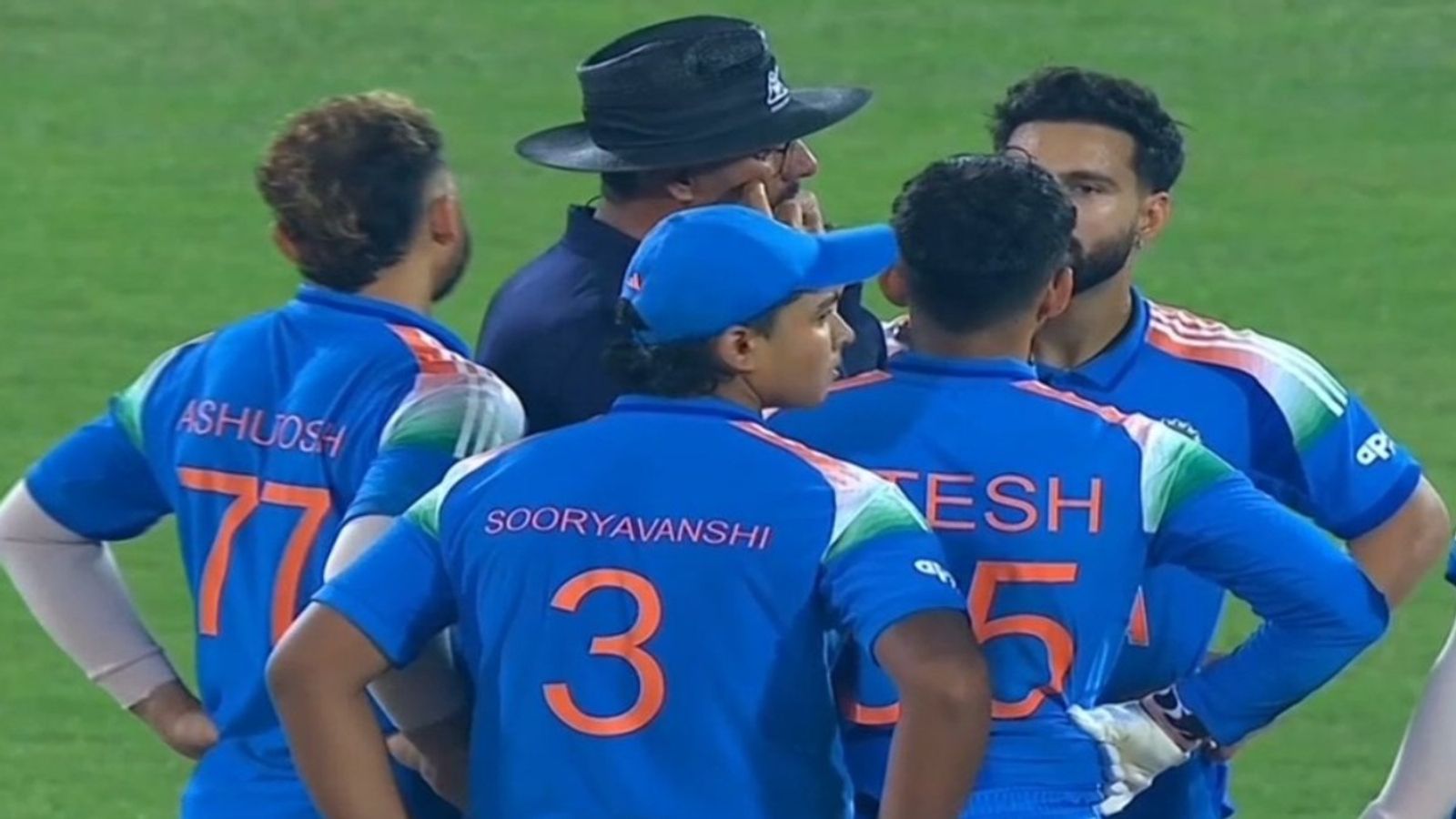The Asia Cup Rising Stars match between India A and Pakistan A was marred by controversy surrounding the dismissal of Maaz Sadaqat in the 10th over. The incident occurred on Suyash Sharma's opening delivery of the over, which Sadaqat skied. Nehal Wadhera initially caught the ball near the boundary rope, but before going over the boundary, he threw the ball back into the field of play, where Naman Dhir completed the catch.
Catch controversy sparks tension in India A vs Pakistan encounter
Despite the visible effort, the third umpire ruled the delivery 'Not Out,' a decision that left the Indian contingent visibly unhappy. This led to a prolonged discussion between the Indian players and the match officials, ultimately causing a delay of about five minutes in the match proceedings.
In the current match’s context, since Wadhera did not return to take the catch — Dhir took it — and no run was taken, it was given a dot ball.
The decision to rule the catch 'Not Out' may have been an early application of a new rule change recently introduced by the Marylebone Cricket Club (MCC). The MCC has clarified that if a fielder makes a second contact with the ball after jumping from beyond the boundary, they must land inside the field of play, or else a boundary will be awarded.
In a note circulated to member boards, the ICC highlighted the MCC's new wording: "MCC has devised a new wording where the ‘bunny hop’ wholly beyond the boundary is removed, but these catches where the fielder pushes the ball up from inside the boundary, steps outside and then dives back in to catch the ball, are permitted." To manage this, the rule stipulates, “Our solution has been to limit any fielder who has gone outside the boundary to touching the ball while airborne only once, and then, having done so, to be wholly grounded within the boundary for the rest of the duration of that delivery.”
This rule also applies to relay catches. If a fielder fails to return wholly inside the playing field from outside before the catch is completed, even by a different player, the result will be a boundary. In the context of the controversial catch in the match, since Wadhera did not return to complete the catch himself, and the catch was completed by Dhir with no run taken, the ultimate decision was given as a dot ball.
Pakistan beat India by 8 wickets
Pakistan Shaheens ended up beating India A by eight wickets. India A were cruising comfortably at 91 for two in the 10th over but were eventually bowled out for a meager 136. In response, Pakistan chased down the target of 137 with 40 balls to spare, registering their second successive victory in the tournament. Conversely, India A suffered their first loss after beginning their campaign with a decisive win against the UAE. The chase was dominated by opener Maaz Sadaqat, who top-scored with an unbeaten 79 off 47 balls, an innings that capped an excellent all-round performance after he had earlier claimed two wickets with his left-arm spin. Sadaqat’s knock included seven fours and four sixes, though he benefited from a dropped catch by Vaibhav Suryavanshi at point.
Asked to bat first, India A saw teenage batting sensation Suryavanshi blaze his way to a 45 off 28 balls, supported by Naman Dhir who smashed 35 off 20 balls. However, Pakistan’s bowlers quickly seized control, with medium-pacer Shahid Aziz claiming 3/24 in three overs. Leg-spinner Saad Masood and Sadaqat also picked up two wickets apiece as India A lost eight wickets for only 45 runs in the final ten overs, drastically falling short of the 175-180 total they had been projected to reach at the halfway mark. Suryavanshi, who had scored a record century in the previous match, continued his aggressive form but eventually holed out in the deep. His wicket, confirmed after multiple replays, changed the complexion of the game, allowing Pakistan to fight back brilliantly and stifle the remaining batters. Emboldened by this massive breakthrough, the disciplined bowling of Aziz, Masood, and Sadaqat tightened the screws on India A.


